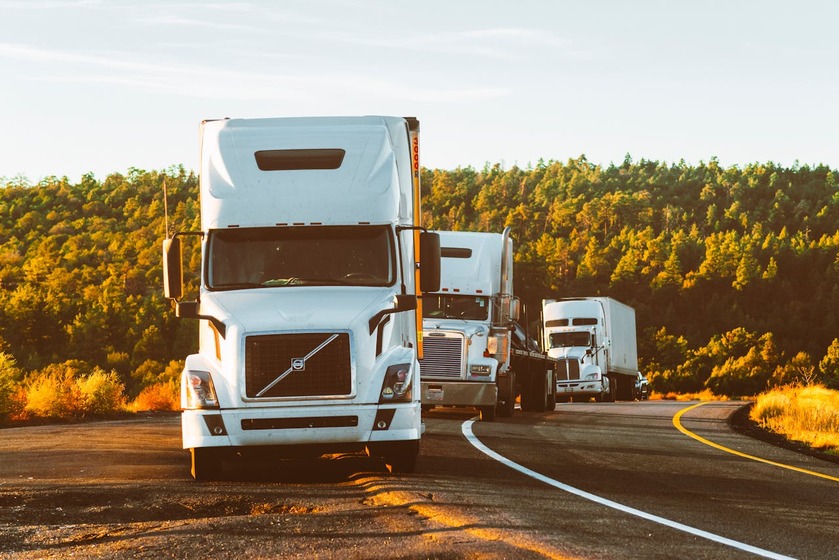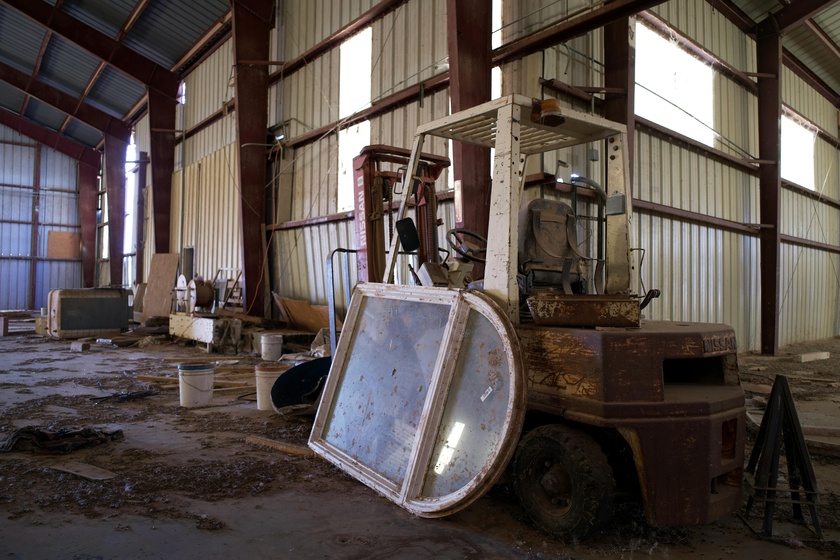
Charleston’s bustling port, expanding interstates, and year‑round tourism keep tractor‑trailers rumbling through the Lowcountry at every hour. When an 80,000‑pound big rig collides with a 3,500‑pound passenger vehicle, the mismatch in speed, size, and stopping distance can unleash catastrophic injuries that alter a family’s future in seconds. What comes next is often confusing: police investigations, insurance adjusters, federal regulations, and medical bills pile up faster than crash victims can process what happened. Below you’ll find a comprehensive guide—rooted in South Carolina law and federal trucking rules—explaining where Charleston drivers really turn for help after a serious truck wreck.
Understanding the Unique Hazards of Trucking in the Lowcountry
Charleston sits at the crossroads of Interstate 26, U.S. Highway 17, and a maze of port connector roads. Those arteries see a mix of local commuters, tourists unfamiliar with the terrain, and long‑haul truckers on strict delivery deadlines.
Heavy Port Traffic and Congested Urban Corridors
The South Carolina Ports Authority handled a record volume of containers last year, and many of them leave the terminal by road. Tractor‑trailers weaving through downtown’s tight streets or merging onto the Don Holt Bridge put ordinary motorists alongside drivers who may have logged ten hours behind the wheel before sunrise. Sudden lane changes, shifting container loads, and limited maneuvering space heighten the risk of sideswipes and rear‑end collisions.
I‑26 Construction Zones
Ongoing widening projects on I‑26 mean flaggers, lane shifts, and narrowed shoulders from Summerville all the way to Mount Pleasant. Construction bottlenecks compress traffic flow, forcing trucks to decelerate abruptly. With a fully loaded rig requiring up to 525 feet to stop from highway speeds, even a split‑second distraction can have lethal consequences.
Weather and Bridge Hazards
Summer squalls sweep in from the Atlantic, coating the Arthur Ravenel Jr. Bridge in slick salt spray that reduces tire grip. Crosswinds funneling across the Cooper River can topple high‑profile trailers or push them out of their lane. After a crash, proving that weather played a role may affect fault apportionment under South Carolina’s modified comparative negligence rules.
Key Federal and State Laws That Shape Your Case
A Charleston truck crash is governed by a layered framework of statutes and regulations, and each layer determines who is ultimately responsible.
Federal Motor Carrier Safety Regulations (FMCSR)
The FMCSA caps a truck driver’s hours‑of‑service (HOS) at 11 hours of driving within a 14‑hour window. It also mandates electronic logging devices (ELDs) to record drive time and rest periods. Violations—say, a falsified logbook or a disabled speed governor—can serve as powerful evidence of negligence.
South Carolina Code § 56‑5‑4100
State law requires trucking companies operating in South Carolina to carry higher minimum liability coverage than ordinary motorists. That insurance becomes the primary source of compensation for medical costs, lost wages, pain and suffering, and future care needs.
Comparative Negligence Threshold
South Carolina follows a 51 percent bar. If a jury finds you 51 percent or more at fault, you recover nothing; 50 percent or less, and your award is reduced proportionally. Insurance carriers leverage this standard to blame victims for everything from sudden braking to the failure to wear a seat belt.
First Steps After a Big Rig Collision
What you do in the first hour and first week after impact can dramatically influence the outcome of any legal claim.
Call 911 and Request Full Incident Reports
Always wait for law enforcement. A Charleston County Sheriff’s deputy or Highway Patrol officer will document skid marks, vehicle rest positions, and witness statements. These details lock in a narrative before the trucking company’s rapid‑response team arrives to shape the evidence.
Seek Immediate Medical Attention—even if Adrenaline Masks Pain
Soft tissue injury, mild traumatic brain injury, and internal organ damage often manifest days later. A gap in treatment is the number‑one excuse insurers cite to deny causation.
Preserve Evidence
Photograph the crash scene, haul‑away debris, and any visible injuries. If possible, record the truck’s DOT number and the driver’s license plate. An attorney can subpoena the ECU “black box,” dispatch logs, and dash‑cam video before data is overwritten.
Why Truck Accident Claims Differ From Car Wrecks
Most car accidents involve two drivers and one liability policy. Tractor‑trailer cases, by contrast, can involve a web of corporate entities, each pointing fingers to shift responsibility.
Multiple Potential Defendants
Driver: Operated the tractor.
Motor Carrier: Employs or contracts with the driver.
Freight Broker: Arranged the shipment and may have negligently hired an unqualified carrier.
Shipper or Loader: Failed to secure cargo, causing a trailer shift.
Maintenance Vendor: Overlooked brake wear or defective tires.
Identifying every liable party maximizes the pool of insurance and assets available for settlement.
Complex Insurance Towers
A single carrier often carries layered coverage: a $1 million primary policy, a $5 million umbrella, and excess policies beyond that. Navigating these layers requires reading endorsements, exclusions, and self‑insured retentions—tasks best handled by counsel experienced in interstate trucking litigation.
Federal Discovery Rules
Because trucking involves interstate commerce, many lawsuits land in federal court. Federal judges enforce stringent discovery deadlines and expert disclosure rules that can overwhelm pro se litigants.
Common Injuries and Long‑Term Consequences
Charleston’s trauma centers report that high‑energy truck crashes frequently cause:
Traumatic Brain Injury (TBI): Even “mild” TBIs disrupt memory, concentration, and mood, affecting employability.
Spinal Cord Damage: Herniated discs, fractured vertebrae, or paralysis.
Orthopedic Crush Injuries: Fractures needing hardware and multiple surgeries.
Burns and Road Rash: Particularly in underride crashes, where fuel ruptures ignite.
Psychological Trauma: PTSD, anxiety disorders, and survivor’s guilt.
Full compensation must account for future therapies, adaptive equipment, vocational retraining, and loss of consortium.
How Charleston Attorneys Build Strong Truck Accident Cases
Rapid‑Response Investigations
Established firms deploy accident reconstructionists within hours. Drone footage, 3D scene scanning, and ECM downloads preserve perishable evidence.
Expert Witness Networks
Medical economists calculate life‑care costs; vocational experts assess work limitations; trucking safety experts testify on HOS or cargo‑securement breaches.
Litigation Funding
The best lawyers front tens of thousands of dollars in expenses, crucial when families face mounting medical bills and lost income.
For proof of professional recognition, see this Super Lawyers–rated Charleston injury firm that routinely handles complex tractor‑trailer litigation.
Financial Recovery: Damages You May Claim
South Carolina law classifies damages as economic, non‑economic, and, in egregious cases, punitive.
Economic: Hospital bills, rehab, future surgeries, medication, lost wages, diminished earning capacity, property damage.
Non‑Economic: Pain, suffering, emotional distress, loss of enjoyment of life.
Punitive: Reserved for reckless conduct—like knowingly dispatching a fatigued driver—that shows conscious disregard for safety.
Calculating these damages requires scrupulous documentation: pay stubs, tax returns, medical invoices, and expert affidavits.
Overcoming Common Defense Tactics
“You Caused the Crash”
Defense lawyers scour social media and driving records for any hint of speeding or distracted driving. An attorney can counter with ECM speed data from the truck or intersection surveillance proving the truck ran a red light.
“Your Injuries Were Pre‑Existing”
Carriers dig up prior accidents or chronic conditions. Medical experts must differentiate between degenerative changes and acute trauma.
“Our Policy Doesn’t Cover That”
Insurers may argue that the driver was an independent contractor or that the trailer was leased under a different company. Piercing these corporate veils often hinges on evidence of shared branding, dispatch control, or lease agreements.
The Claims Timeline in South Carolina
Investigation (0–90 days): Evidence gathering, liability analysis.
Demand Package (90–150 days): Comprehensive letter to insurers detailing injuries and damages.
Negotiation (150–240 days): Counteroffers, mediation.
Filing Suit (6–24 months): Discovery, depositions, court‑ordered settlement conferences.
Trial or Settlement: Majority resolve before trial, but preparing every case as if it will see a jury boosts settlement value.
South Carolina’s statute of limitations for personal injury is three years from the date of the crash, but evidence degrades quickly; earlier action is always wiser.
Frequently Asked Questions
How much does it cost to hire a trucking attorney?
Most operate on contingency—no fee unless they win. Typical fees range from 33⅓ % pre‑suit to 40 % in litigation, plus case expenses reimbursed from the recovery.
Will my case go to trial?
Roughly 5–10 % of truck cases reach a jury. However, filings in federal court and aggressive discovery can prompt carriers to settle for fair value sooner.
Can I still recover if the truck driver fled the scene?
Yes. South Carolina’s uninsured motorist coverage and potentially the trucking company’s policy may apply, especially if law enforcement later identifies the driver through surveillance or eyewitness testimony.
For deeper answers to common trucking accident questions, the Super Lawyers trucking accident resource center offers plain‑language articles and legal perspectives.
Choosing the Right Advocate
Charleston drivers face a David‑versus‑Goliath battle against interstate carriers and their insurers. Success hinges on partnering with counsel who combines local courtroom experience with national‑scale resources. If you or a loved one has been struck by an 18‑wheeler, don’t navigate the maze alone—get a Charleston truck accident lawyer who understands federal trucking law, South Carolina statutes, and the strategies insurers use to minimize payouts.
Final Thoughts
A big rig crash can thrust families into financial and emotional turmoil, but knowledge and swift action restore control. By understanding the complex web of regulations, potential defendants, and evidence preservation techniques, Charleston crash victims position themselves for maximum recovery. Whether you’re battling medical bills, negotiating with aggressive adjusters, or planning for lifelong care, the resources outlined above provide a roadmap from chaos to accountability.


















